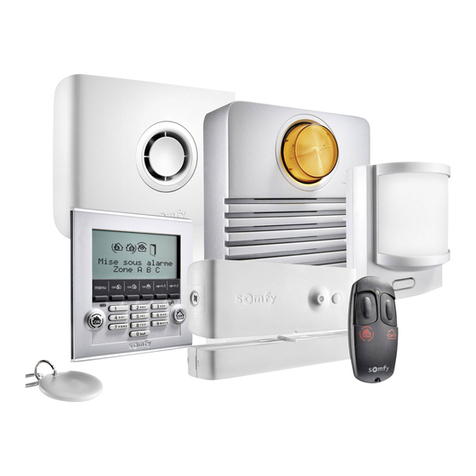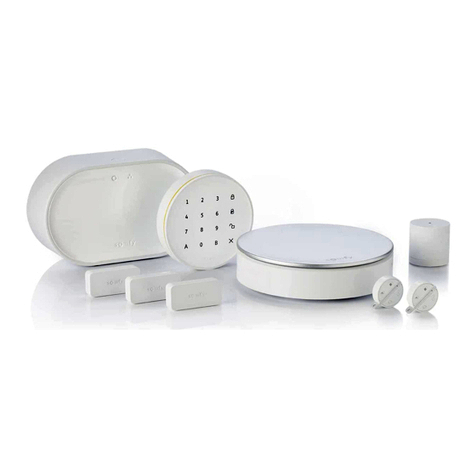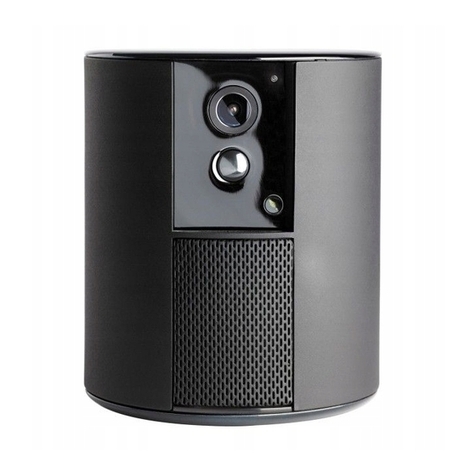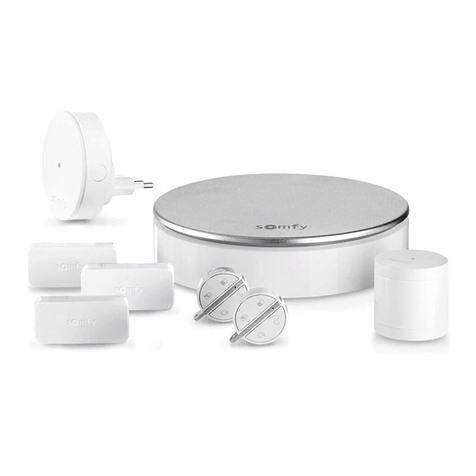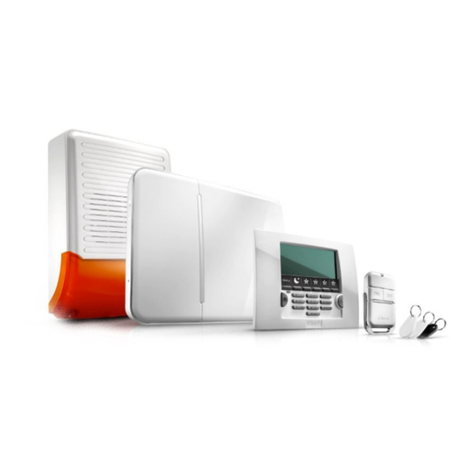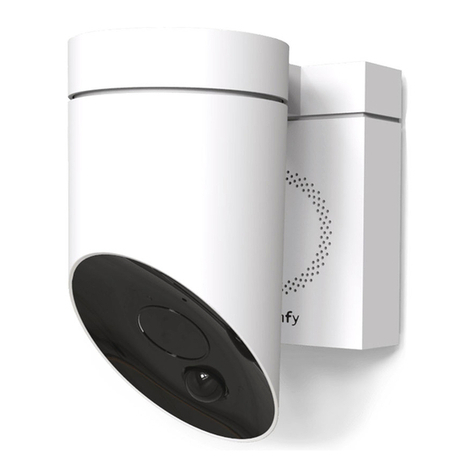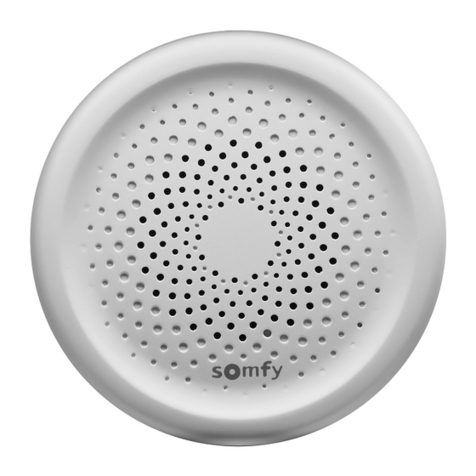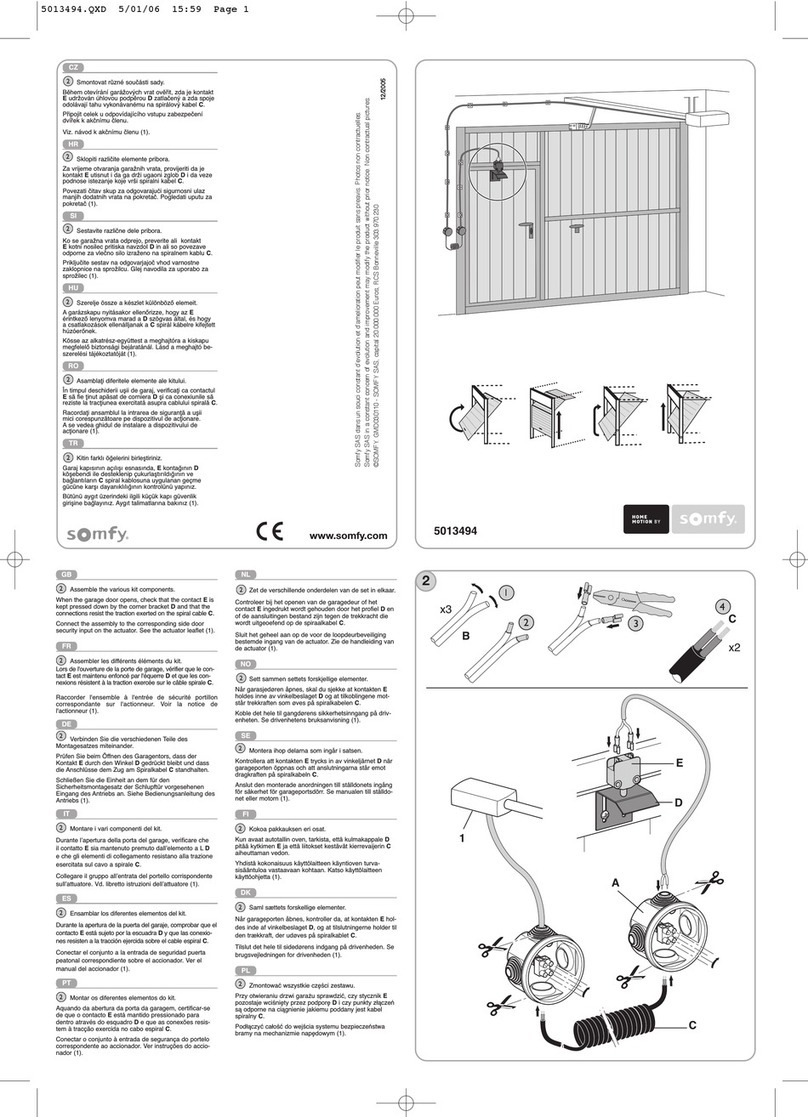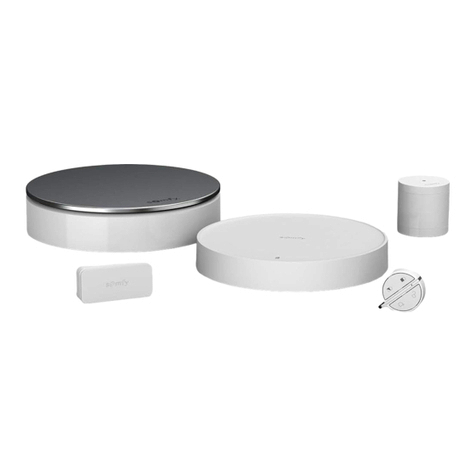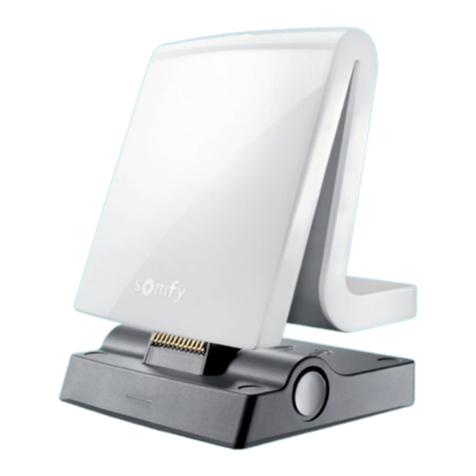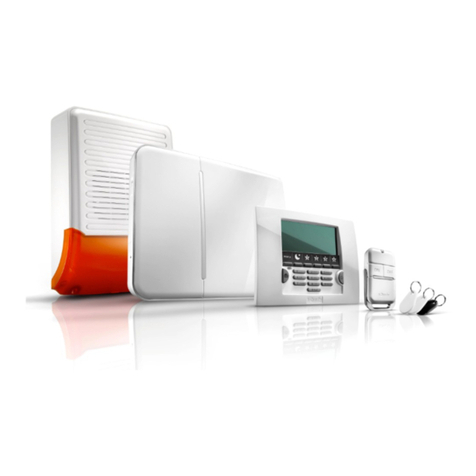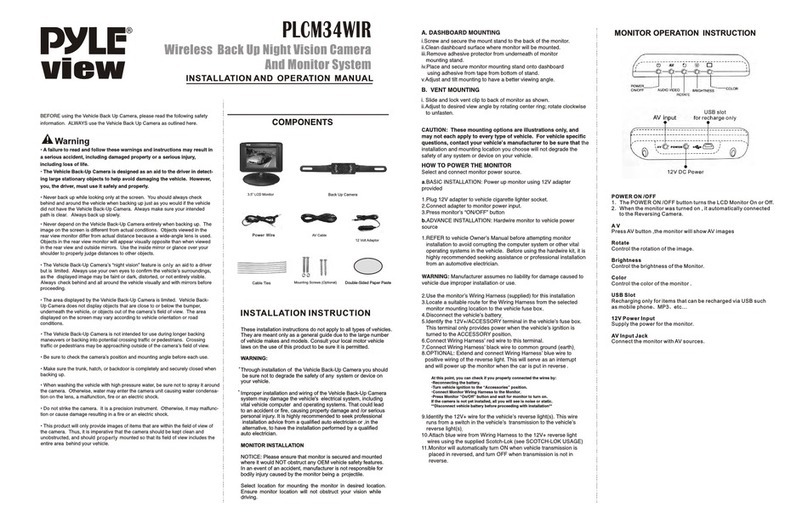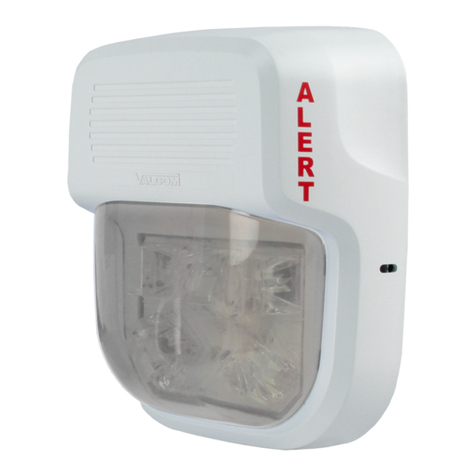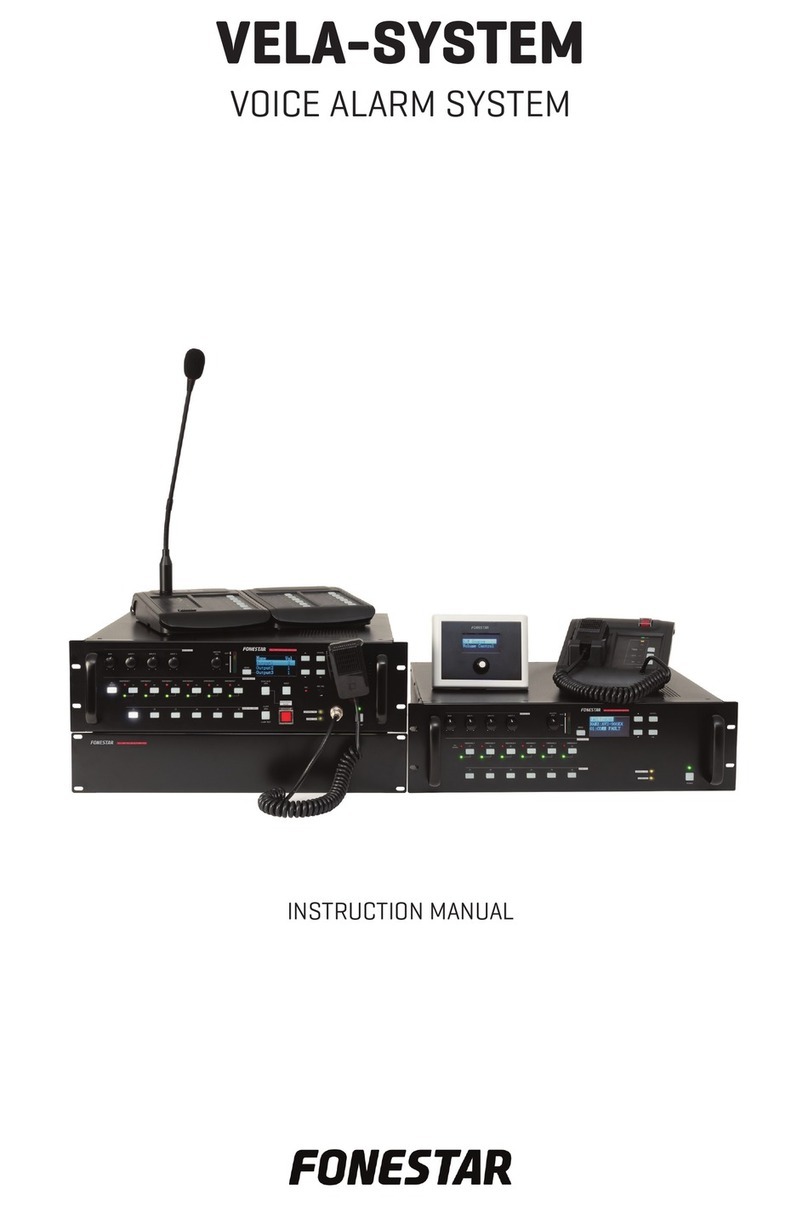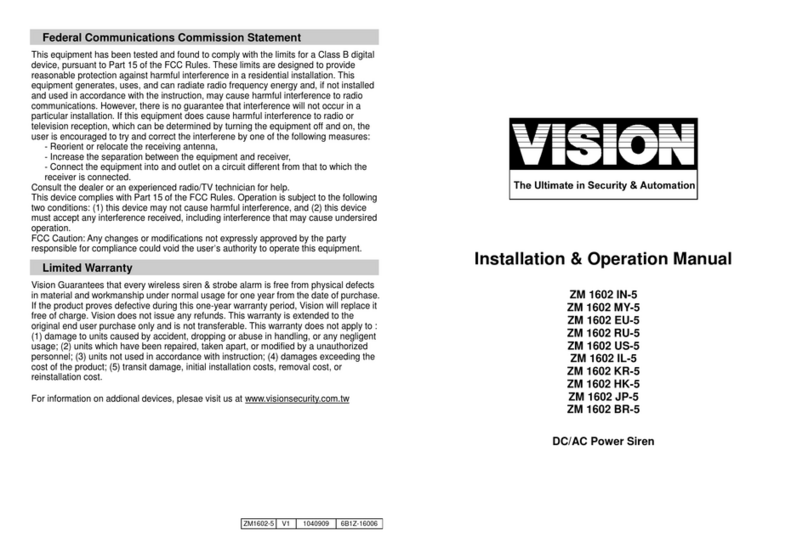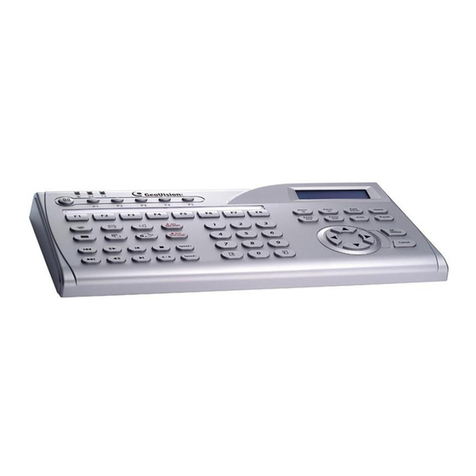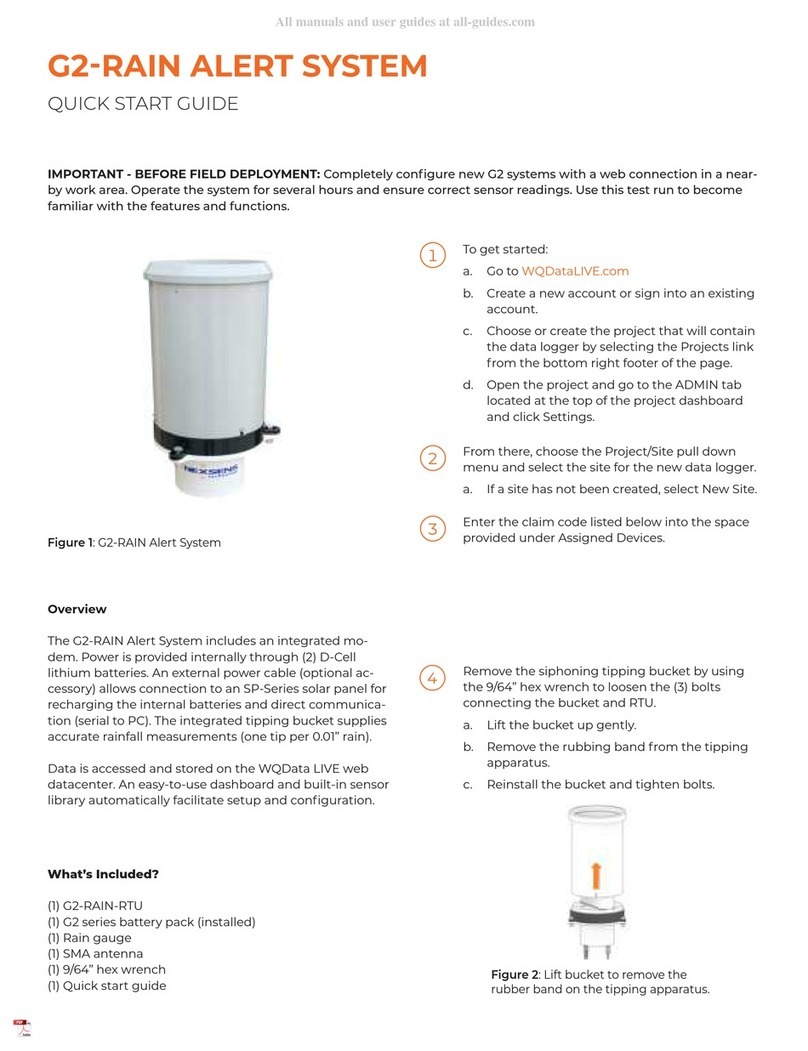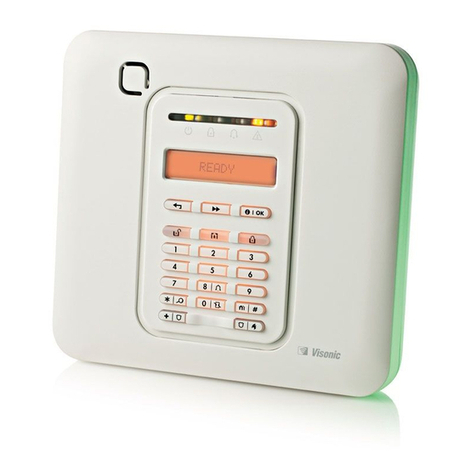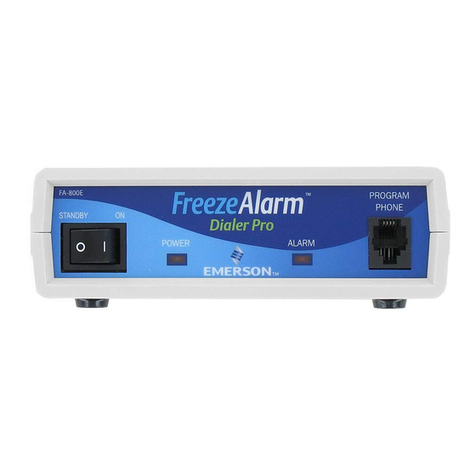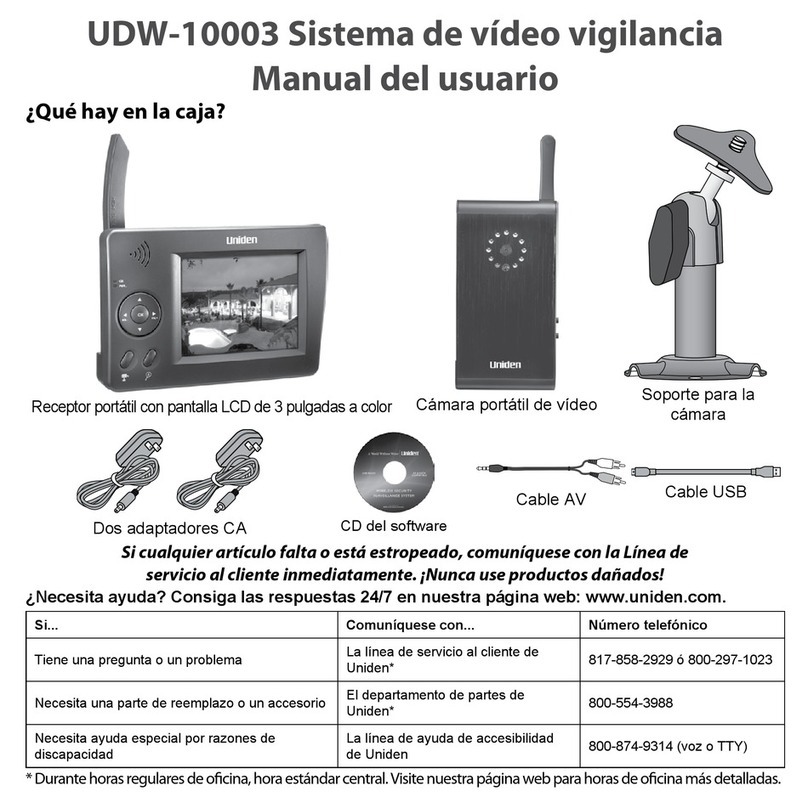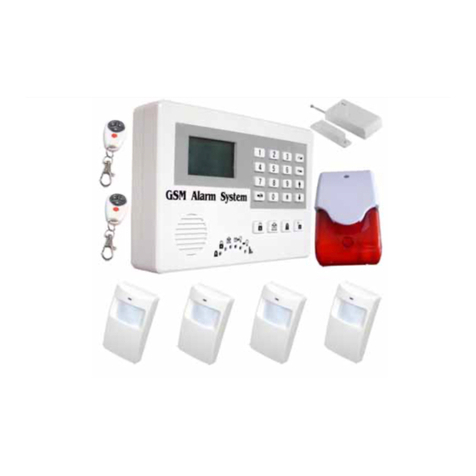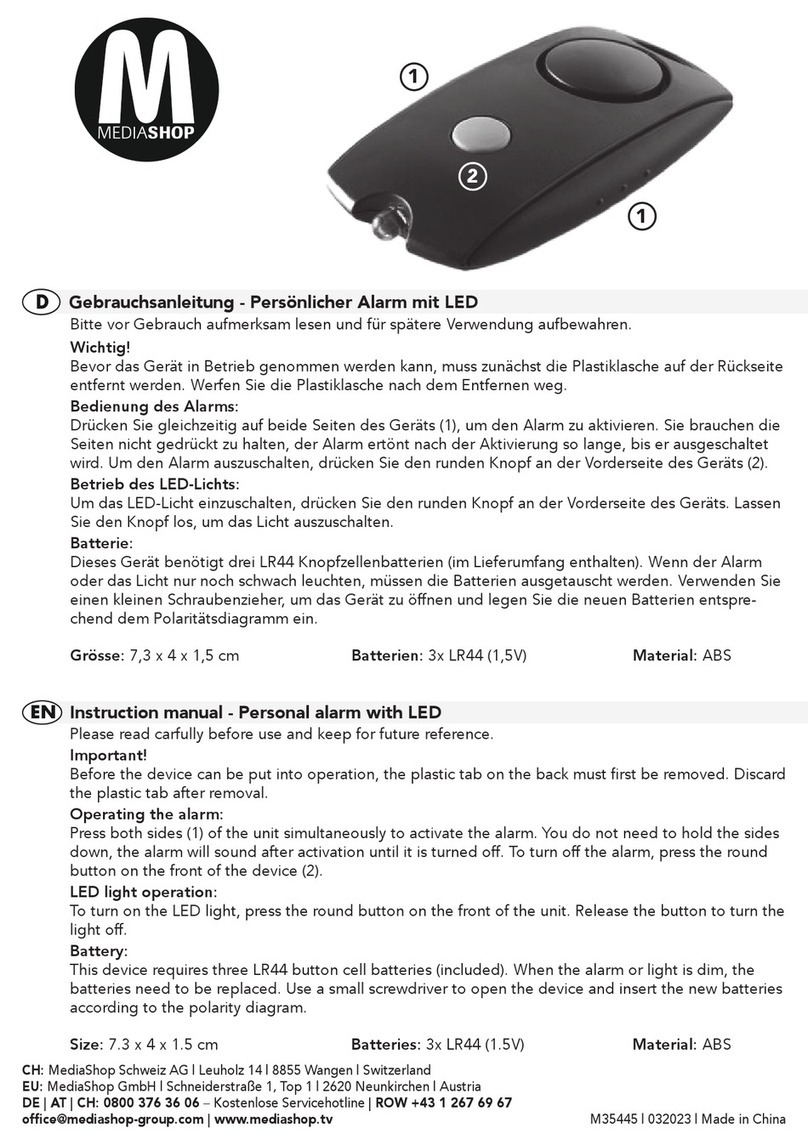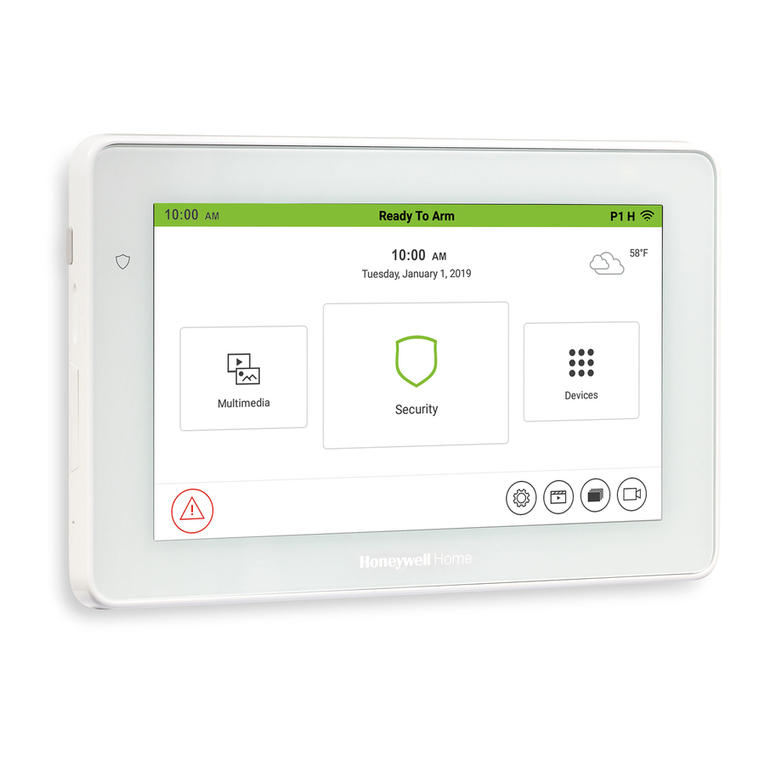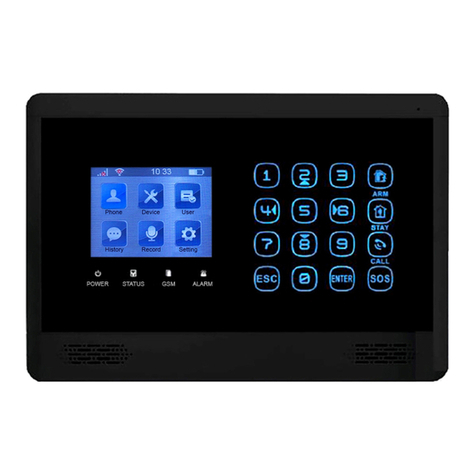... the ala m system wo k?
Activation
The keypads, the remote controls and the badge make it possible to
control the system either on an individual zone basis or fully. They provide
a visual display of the status of the system during operation.
The LCD keypad allows for upgradeable, customised installation
(SMS function with phone dialer, etc.).
The LCD keypad and the multi-application remote control make it possible
to control the SOM Y automatic devices (motorised gate, garage door,
lighting or roller shutters with SOM Y motor).
It is also possible to control the alarm, roller shutters and lighting
remotely by phone.
ON/OFF +
ZONES REMOTE
CONTROL
MULTI-
APPLICATION
REMOTE CONTROL
ON/OFF REMOTE
CONTROL
BADGE
(SOLD IN PAIRS)
LCD KEYPAD
+ BADGE
CONTROL
KEYPAD
Dissuading, Alerting, Signalling
The increasing volume of the sirens discourages intruders.
The outdoor siren with flash alerts and signals an intrusion to anyone
nearby and the phone dialer sends one or more alarm messages.
The central unit/phone dialer analyses the information sent by the
detectors, triggers the sirens and sends one of the following to 4 telephone
numbers:
– either a synthesised voice alarm message, using the PSTN dialer module (Public Switched Telephone Network = the fixed
telephone line),
– or an alarm SMS, using the GSM dialer module (Global System for Mobile communications),
– or both, if your alarm unit is fitted with both a PSTN and a GSM module,
– or it sends an alarm to a remote monitoring centre, using the PSTN module.
If the installation has roller shutters (with a SOM Y motor), it is possible to program these to come down automatically when an
intrusion is detected or to go up automatically if smoke is detected, by means of a SOM Y receiver for roller shutters.
To further discourage intruders, it is also possible to control a light when intrusion is detected, using a SOM Y light receiver.
OUTDOOR SIREN
WITH FLASH
CENTRAL UNIT/PHONE
DIALER
INDOOR
SIREN
ntrusion detection
The movement detectors detect the movement of people or animals in
three-dimensional space.
The 2 pet movement detectors make it possible to protect a room
when a pet is present.
The opening detectors detect when a door or window is opened. They
can emit a chime on the indoor siren when such an action is detected
(see Kiela function on page 37).
The camera can be used to film a sequence linked to an intrusion.
Domestic fault detection
The domestic detectors detect the presence of water, smoke or a power
failure.
OUTDOOR
MOVEMENT
DETECTOR
MOVEMENT
DETECTOR
FOR BIG DOGS
GARAGE DOOR
OPENING DETECTOR
ROLLER SHUTTER
OPENING DETECTOR
AUDIOSONIC GLASS
BREAKAGE DETECTOR
OPENING AND GLASS
BREAKAGE DETECTOR
SMOKE
DETECTOR
DETECTOR
DETECTOR
POWER
DETECTOR
WATER LEAKAGE
DETECTOR
MOVEMENT
DETECTOR
■5■
IP CAMERA
MOVEMENT
DETECTOR FOR
SMALL PETS




















